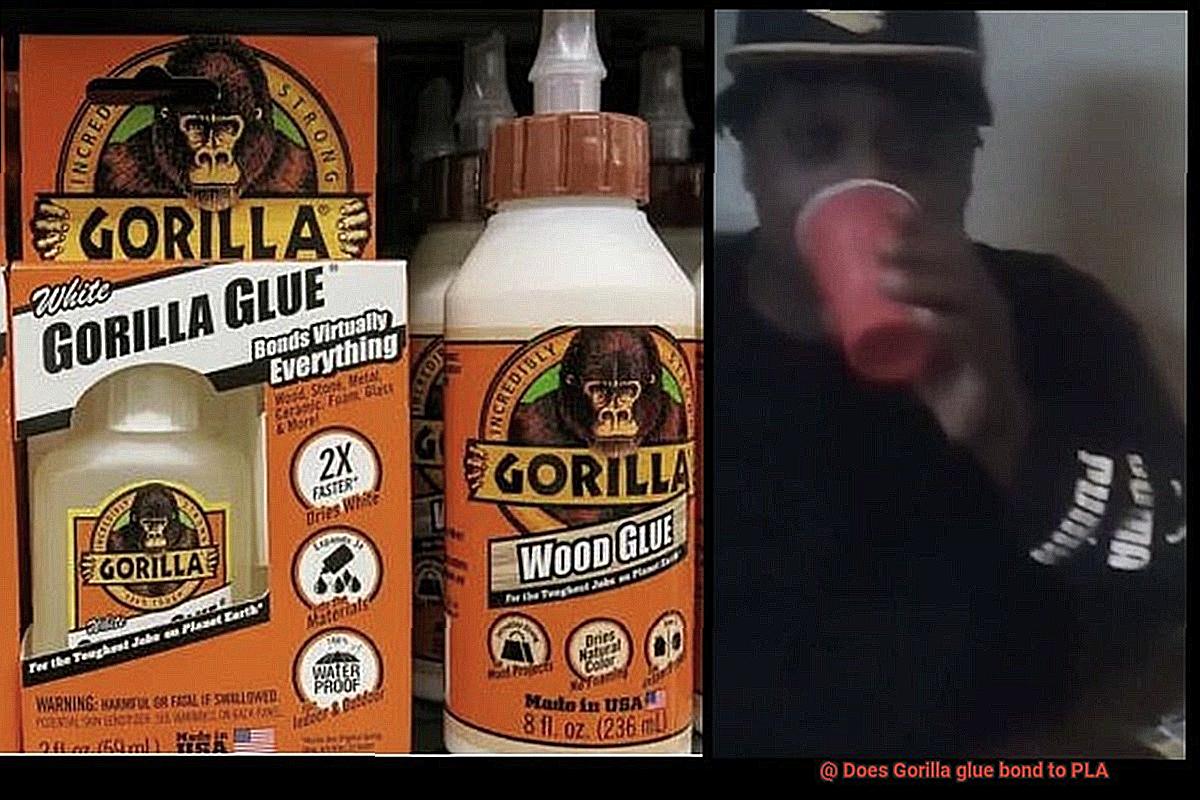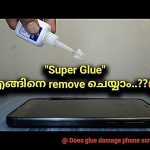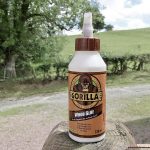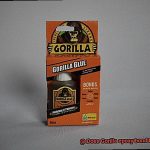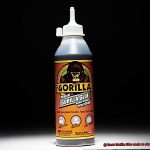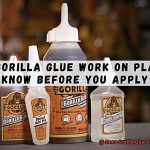If you’ve dabbled in the world of DIY or 3D printing, you know that finding the perfect adhesive for different materials is crucial. Enter PLA, the popular thermoplastic used in 3D printing. But when it comes to bonding PLA, can Gorilla Glue really get the job done?
Gorilla Glue, known for its strength and versatility, has been a go-to adhesive for many projects. However, when it comes to PLA, things get a bit trickier. To truly understand this bond, let’s dive into the process, evaluate the results, and gather any additional information that can help us make an informed decision.
When attempting to bond PLA with Gorilla Glue, it’s important to consider the nature of both materials. PLA is a plant-based thermoplastic that offers decent strength but has a smooth surface that can pose challenges for certain adhesives. On the other hand, Gorilla Glue comes in various formulations like Original Gorilla Glue, Gorilla Super Glue, and Gorilla Glue Epoxy – each with its own bonding capabilities.
Users have reported mixed results when using Gorilla Glue on PLA. Some claim success while others have experienced weaker bonds or no adhesion at all. One crucial factor to keep in mind is surface preparation. Cleaning the PLA surface beforehand with isopropyl alcohol could significantly improve your chances of a strong bond.
Additionally, some users have found success by roughening up the PLA surface slightly. This can be achieved through sanding or lightly scoring the intended bonding area. By creating texture on the surface, there’s more room for the Gorilla Glue to grip onto – increasing your chances of a solid bond.
However, it’s worth noting that these methods may not work universally for all types of Gorilla Glue or PLA since different formulations can yield different results. It’s always recommended to test the adhesion on small, inconspicuous areas of your PLA and Gorilla Glue combination before committing to a larger project.
In conclusion, the question of whether Gorilla Glue effectively bonds to PLA doesn’t have a straightforward answer. While some users have achieved strong bonds through proper surface preparation and experimentation, others haven’t been as lucky. Testing, trial, and error remain essential in finding the right adhesive for your specific PLA and Gorilla Glue combination.
What is Gorilla Glue?
Contents
- 1 What is Gorilla Glue?
- 2 What is PLA?
- 3 Comparing the Chemical Composition of Gorilla Glue and PLA
- 4 Challenges in Bonding Gorilla Glue to PLA
- 5 Enhancing the Bond Between Gorilla Glue and PLA
- 6 Creating a Mechanical Bond for Improved Adhesion
- 7 Variations in Compatibility Between Different Types of Gorilla Glue and PLA
- 8 Testing and Evaluation Before Relying on the Bond
- 9 Conclusion
Gorilla Glue, a trusted name in the adhesive industry, has gained a reputation for its exceptional bonding capabilities. Whether you’re a DIY enthusiast or a professional, this polyurethane-based adhesive is known for its ability to securely bond various materials together. In this article, we will delve into the properties and applications of Gorilla Glue, exploring its strength, versatility, and the different variants available.
Unparalleled Bonding Strength:
Gorilla Glue’s claim to fame lies in its unparalleled bonding strength. By expanding into the pores of the material it is applied to, this adhesive forms an incredibly tight grip. This unique expansion ensures a long-lasting bond that can withstand even the toughest conditions. From wood and metal to fabric and ceramics, Gorilla Glue can confidently secure diverse materials with confidence.
A Variety of Formulations:
To suit different bonding needs, Gorilla Glue offers a range of formulations tailored for specific applications. The original Gorilla Glue is a go-to choice for both indoor and outdoor projects, as it is waterproof and resistant to temperature fluctuations. Gorilla Super Glue, on the other hand, is designed for rapid bonding and quick fixes, making it ideal for smaller projects. Additionally, there are specialized variants like Gorilla Wood Glue and Gorilla Epoxy that cater to specific material requirements.
Exceptional Durability and Versatility:
Aside from its adhesive properties, Gorilla Glue boasts exceptional durability and versatility. It can withstand extreme temperatures, ensuring its effectiveness in both hot and cold environments. Furthermore, this adhesive is resistant to water and chemicals, making it suitable for use in harsh conditions where other adhesives may fail. Whether you’re repairing furniture or constructing outdoor structures, Gorilla Glue will provide a reliable bond that stands the test of time.
Application Techniques:
Applying Gorilla Glue is a straightforward process. Start by ensuring that the surfaces to be bonded are clean and dry. Next, apply a thin layer of the glue onto one surface, and then firmly press the two surfaces together. Take care not to apply an excessive amount of glue, as Gorilla Glue expands as it cures. Removing excess glue is easily done with a damp cloth or by scraping it off once it has dried.
What is PLA?
Today, we embark on a journey into the fascinating world of Polylactic Acid, better known as PLA. Brace yourselves, because we’re about to explore the depths of this biodegradable plastic and uncover its secrets.
First and foremost, let’s talk about what makes PLA so exceptional – its eco-friendly nature. Derived from renewable resources such as corn starch or sugarcane, PLA stands as a sustainable alternative to traditional plastics. But here’s the real kicker – while regular plastics can languish for centuries before decomposing, PLA breaks down within just a few months under the right conditions. It’s like a superhero, swooping in to save the planet.
But hold on, there’s more. PLA isn’t just environmentally friendly; it boasts a myriad of other impressive benefits too. For starters, it has a lower carbon footprint compared to other plastics because it emits fewer greenhouse gases during production. And get this – it’s non-toxic and safe for food contact, making it the perfect choice for packaging applications. Oh, and did I mention that it can withstand high temperatures without melting? That’s right – this plastic means serious business.
Now let’s delve into the art of bonding PLA. You see, PLA has a smooth surface and low surface energy, which can pose a challenge when it comes to forming strong adhesive bonds. But fear not. There exists a range of special adhesives designed specifically for bonding plastics like PLA. Cyanoacrylate (super glue), epoxy, and certain types of polyurethane adhesives are your go-to options for creating reliable and long-lasting bonds.
But wait. Before you reach for that trusty Gorilla Glue, let me share a little secret with you. While Gorilla Glue works wonders on porous surfaces like wood and ceramics, it may not be the best choice for bonding smooth plastics like PLA. Sure, it might provide some initial adhesion, but the bond strength might not be as reliable as you’d hope.
- So, here’s the key takeaway – choose adhesives specifically formulated for plastics when bonding PLA. These adhesives contain special chemicals that increase the surface energy of the PLA, ensuring a strong and durable bond that stands the test of time.
- And there you have it – the lowdown on PLA. It’s a biodegradable plastic that’s revolutionizing industries like 3D printing. With its eco-friendly nature, non-toxicity, and impressive thermal stability, PLA is a true superhero in the world of plastics. Just remember, when it comes to bonding PLA, choose your adhesive wisely, and you’ll be unstoppable.
Comparing the Chemical Composition of Gorilla Glue and PLA
Today, we’ll explore the chemical compositions of two popular materials: Gorilla Glue and PLA. While Gorilla Glue is known for its versatility, PLA has emerged as a sustainable alternative. Let’s dive into their unique chemical makeup and how it affects their bonding ability.

Gorilla Glue – A Powerful Polyurethane Blend:
Gorilla Glue packs a punch with its polyurethane-based formulation. It contains compounds like diisocyanates, diphenylmethane diisocyanate (MDI), and polyols. These ingredients work together to create a strong bond between materials, making Gorilla Glue suitable for various applications.
PLA – The Sustainable Superstar:
On the other hand, PLA, or polylactic acid, is a biodegradable thermoplastic polymer derived from renewable sources like cornstarch or sugarcane. PLA’s eco-friendly nature has made it a popular choice for 3D printing due to its low melting point and ease of use.
Chemical Composition Clash:
When comparing Gorilla Glue and PLA, their chemical compositions differ significantly. Gorilla Glue relies on polyurethane compounds, while PLA is composed of lactic acid polymers.
The Impact on Bonding Ability:
These differences in chemical structure directly affect the bonding capability between Gorilla Glue and PLA. Gorilla Glue’s versatility may not translate well to bonding PLA due to these dissimilarities. Additionally, PLA’s biodegradability can pose challenges for Gorilla Glue’s curing process, potentially weakening the bond.
Surface Characteristics Matter:
PLA’s relatively low surface energy presents another hurdle for adhesion. Even with a strong adhesive like Gorilla Glue, achieving a firm bond on PLA surfaces can be challenging.
Alternative Options:
Fear not. Specialized adhesives formulated specifically for bonding PLA are readily available. These adhesives often contain additives or modifiers to enhance adhesion to PLA surfaces, providing better results.
Conclusion:
In the realm of glue chemistry, Gorilla Glue and PLA showcase their unique compositions and properties. While Gorilla Glue’s polyurethane-based formulation makes it a versatile adhesive, it may not form a strong bond with PLA due to their different chemical structures. PLA’s biodegradability and low surface energy further complicate the bonding process. However, with specialized adhesives formulated for PLA bonding, you can unlock the full potential of this eco-friendly superhero material.
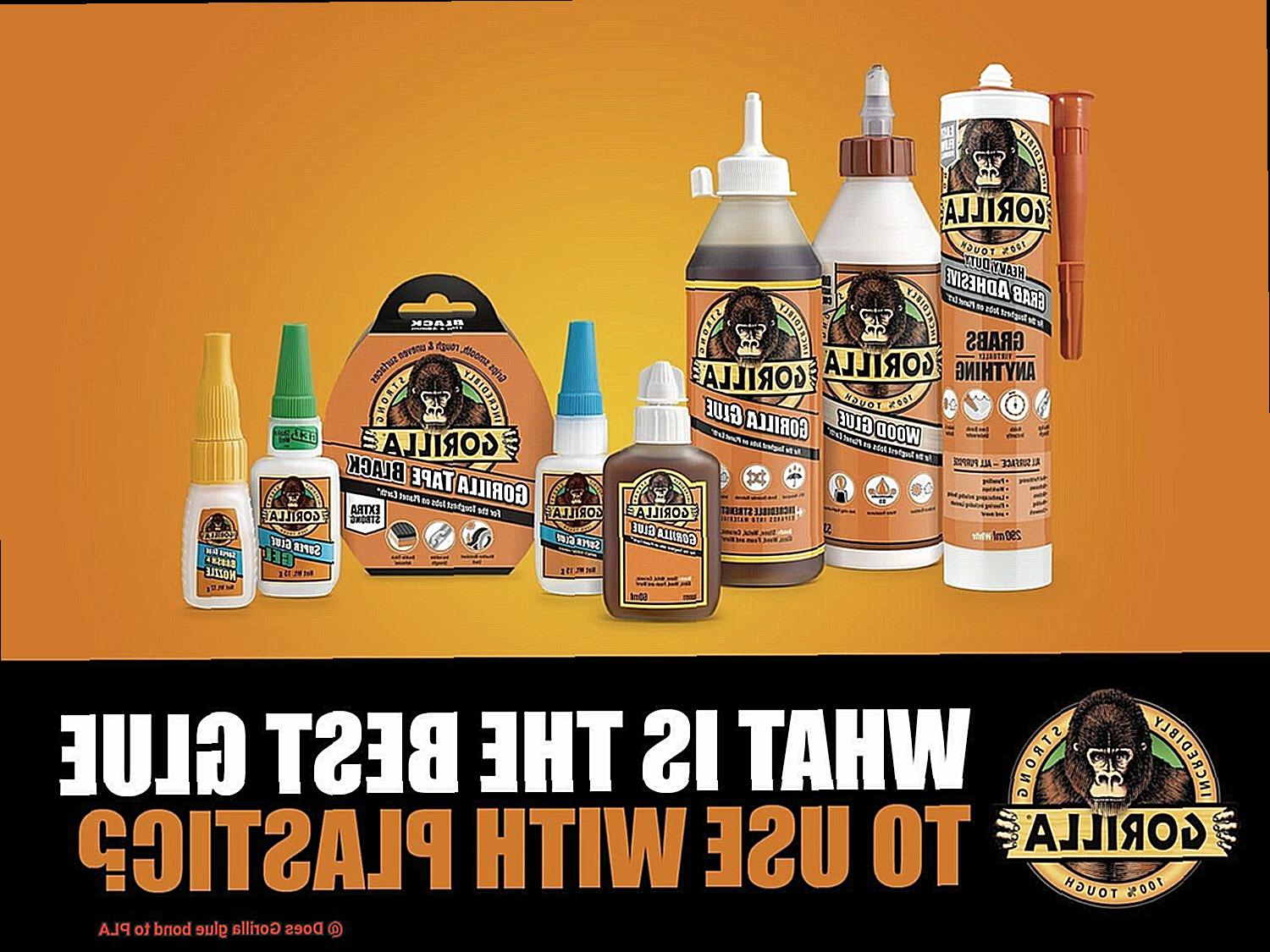
Challenges in Bonding Gorilla Glue to PLA
Unleashing the Bonding Potential: Gorilla Glue vs. PLA
In the epic battle between adhesive superheroes, Gorilla Glue and PLA take center stage. Gorilla Glue, known for its unrivaled strength and versatility, faces off against PLA, the eco-friendly champion derived from renewable resources. However, their clash of chemical compositions presents a challenge when it comes to bonding these two formidable opponents. In this article, we will delve into the intricate details of bonding Gorilla Glue to PLA, uncovering the obstacles that stand in their way and revealing the secrets to unlocking their full bonding potential.
Challenge #1: Low Surface Energy
PLA’s smooth and non-porous surface poses a major hurdle in achieving a strong bond with Gorilla Glue. With its low surface energy, PLA inhibits adhesive penetration and obstructs the formation of a robust bond.
Challenge #2: Temperature Sensitivity
Compared to other plastics, PLA has a relatively low melting point. Its sensitivity to temperature can lead to deformation or even melting if excessive heat is applied during the bonding process. It’s like walking a tightrope where one wrong move can result in failure.
Challenge #3: Hydrophobic Nature
Gorilla Glue relies on moisture activation for optimal curing. Unfortunately, PLA’s hydrophobic nature makes it challenging for the glue to absorb moisture and create the ideal conditions for proper curing. It’s like trying to quench a thirst that cannot be quenched.
Challenge #4: Chemical Compatibility
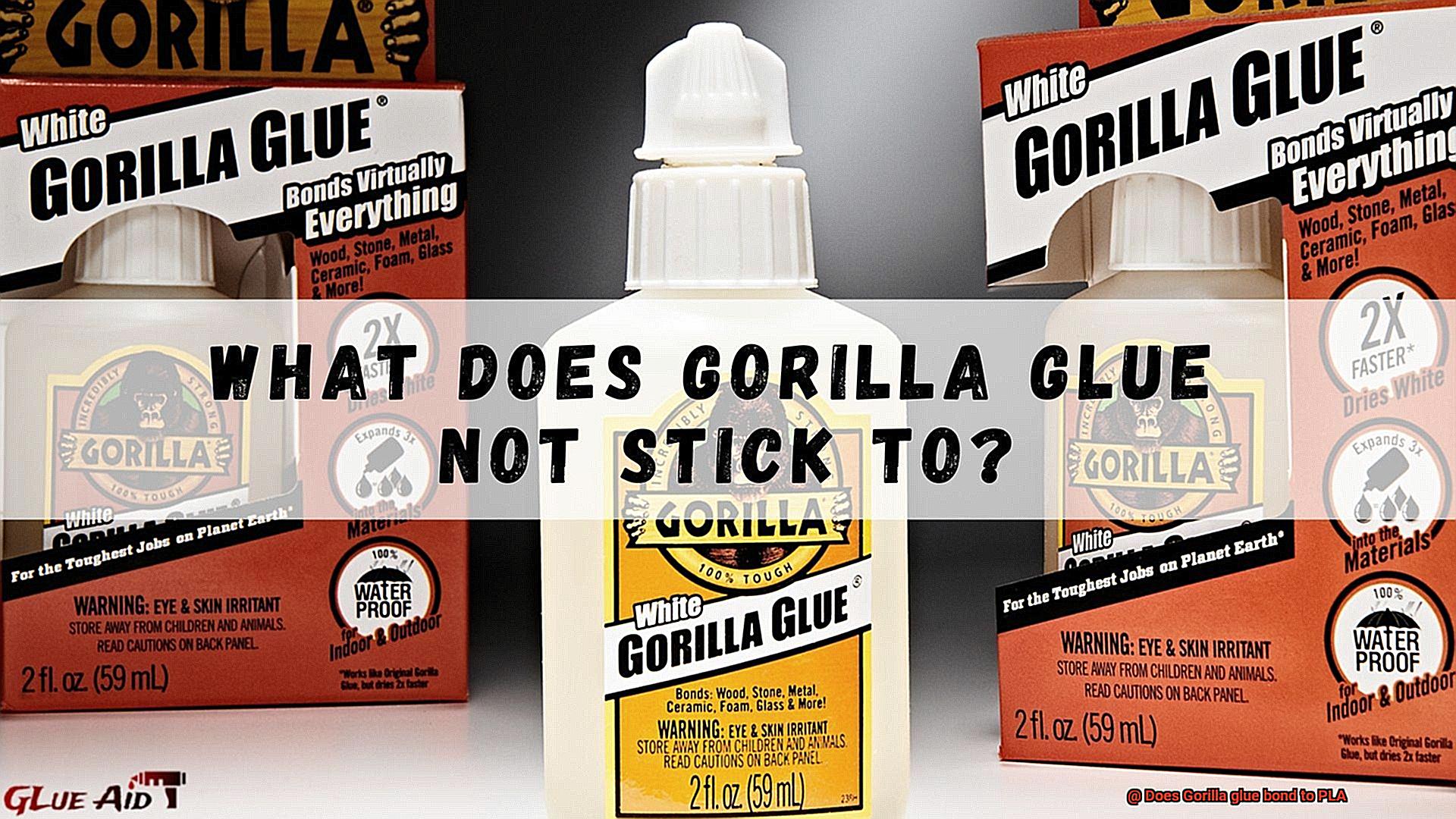
Gorilla Glue, a polyurethane-based adhesive, may have limited compatibility with certain plastics like PLA due to differences in their chemical compositions. They are like two magnets repelling each other, unable to form a strong bond.

Overcoming the Challenges:
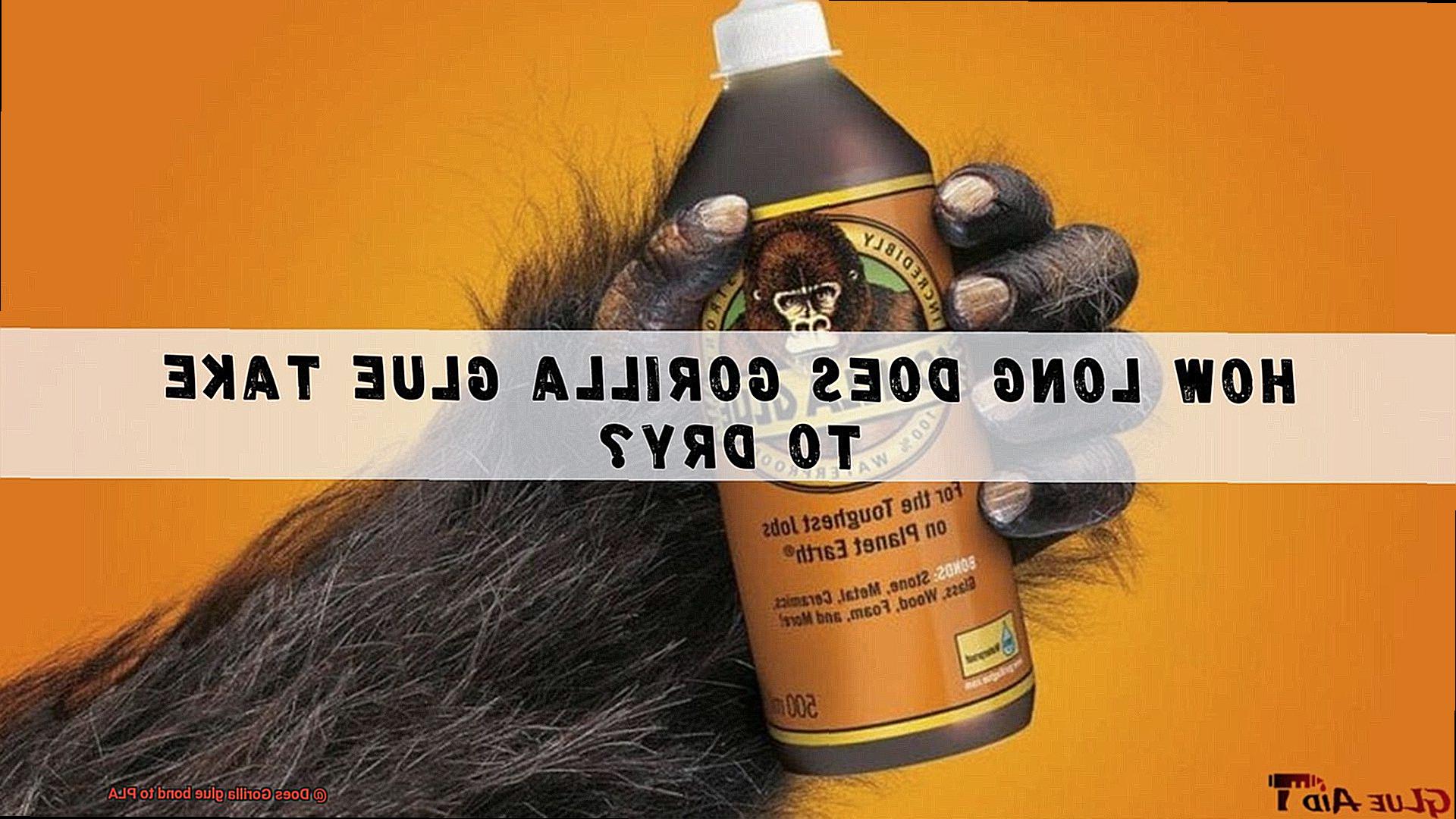
Surface Preparation:
To improve adhesion, roughening the surface of PLA using sandpaper or a file creates texture and increases the surface area for better bonding. It’s like adding grip to a slippery surface.
Primer or Adhesion Promoter:
Using a primer or adhesion promoter specifically designed for bonding plastics can significantly enhance the bond between Gorilla Glue and PLA. These magical substances improve adhesion properties when applied before the adhesive, acting as a bridge between two worlds.
Follow Instructions:
To ensure the best possible bond, it is crucial to meticulously follow the instructions provided by Gorilla Glue. Pay attention to recommended curing time and temperature range, as they hold the key to success. It’s like following a treasure map with precise directions.
Testing and Experimentation:
Before attempting to bond larger and more critical parts, conducting small-scale tests on scrap PLA pieces is essential. This allows for the discovery of optimal bonding conditions between Gorilla Glue and PLA. It’s like conducting a scientific experiment, where trial and error lead to groundbreaking discoveries.
Enhancing the Bond Between Gorilla Glue and PLA
Today, we’re going to explore the secrets to enhancing the bond between Gorilla Glue and PLA. Whether you’re a DIY enthusiast or a professional in need of some adhesive expertise, we’ve got you covered. So put on your safety goggles, because we’re about to dive deep into the science of sticking things together.
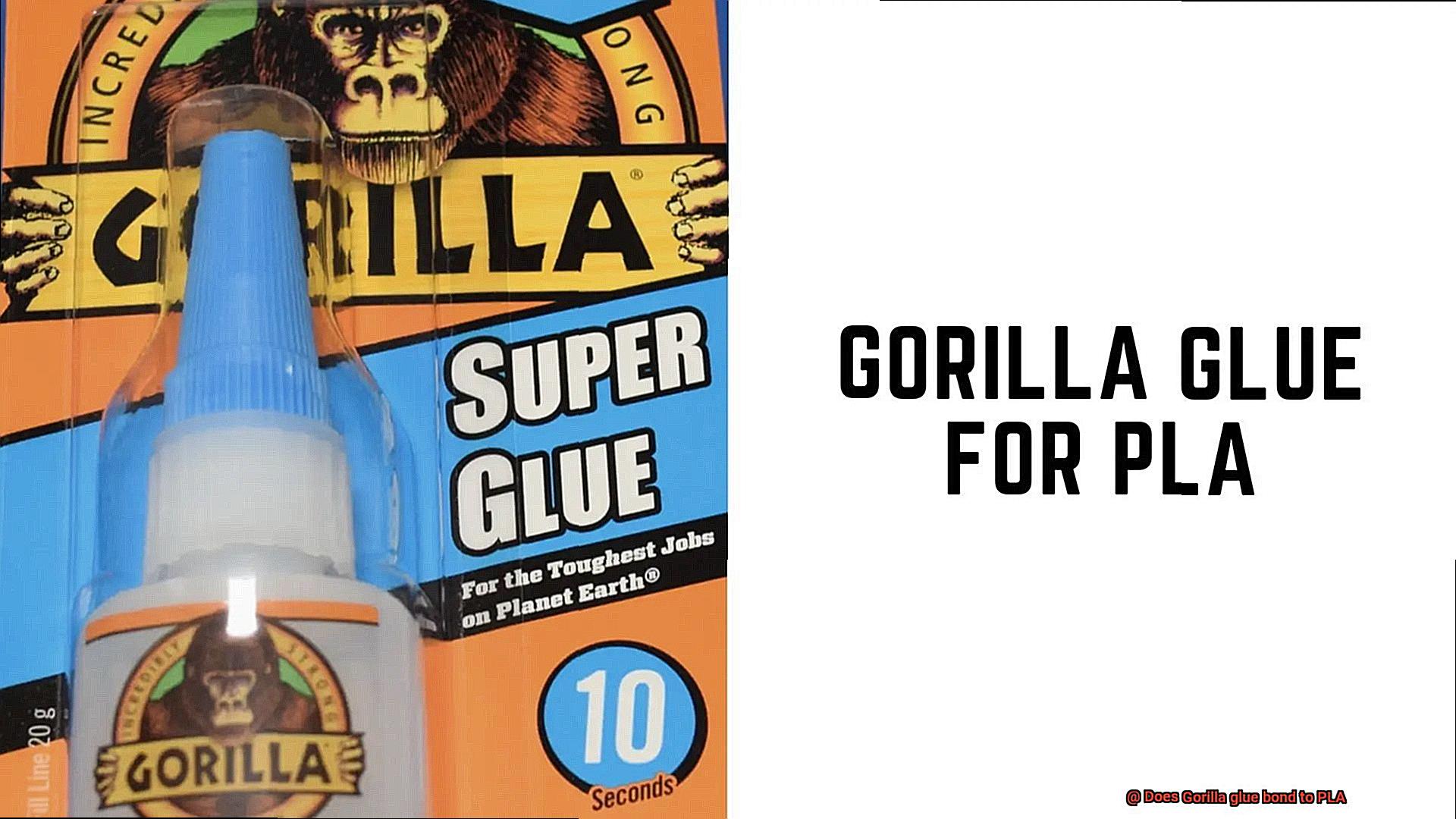
Surface Preparation:
Before any bonding can occur, it’s crucial to ensure that both the PLA surface and Gorilla Glue are pristine. Picture this like a first date – no one wants to hold hands with dirty palms. To achieve this, clean the PLA surface using isopropyl alcohol or a mild detergent solution. This will remove any contaminants that could hinder adhesion. And don’t forget to give the Gorilla Glue nozzle and cap a thorough cleaning too – cleanliness is key.
Roughening the Surface:
To take your bonding game to the next level, consider roughening the PLA surface. Just like adding texture to a painting for more depth and dimension, roughening creates more contact points for the adhesive to grip onto. A light sanding of the area where the glue will be applied does the trick, increasing overall bond strength and reliability.
Adhesion Promoters:
Enter stage left: adhesion promoters. These superheroes create a chemical interaction with the PLA material, boosting adhesion levels to new heights. Special primers designed specifically for PLA can be applied before using Gorilla Glue, ensuring a match made in adhesive heaven. Remember, always follow the manufacturer’s instructions when using primers to avoid any glue-related heartbreak.
Environmental Factors:
Just like humans, adhesives have their environmental preferences too. For optimal bonding success, both the PLA surface and Gorilla Glue should be at room temperature during application. Extreme temperatures can throw off their chemistry and weaken their bond. Similarly, high humidity can lead to moisture-related issues, affecting the adhesive properties of Gorilla Glue. Keep those factors in check for a strong and lasting bond.
Consider the Stress:
While Gorilla Glue is known for its incredible strength, it dries as a rigid material. PLA, on the other hand, has some flexibility to it. So, before you go gluing your PLA creations together, consider the application requirements and potential stress that may be applied to the bond. In some cases, additional mechanical fasteners or support might be necessary to ensure a rock-solid connection.
Creating a Mechanical Bond for Improved Adhesion
Glue – the unsung hero of DIY projects, repairs, and craft endeavors. But not all glues are created equal. When it comes to bonding Gorilla Glue with PLA, achieving a durable and unbreakable bond requires a little extra effort. Get ready to dive into the world of mechanical bonding and discover the secrets to unlocking its full potential.
Roughening the Surface:
To create a strong mechanical bond, start by roughening the surface of the PLA. Gently sand or file the surface to increase its surface area, providing more contact points for the glue to adhere to. Think of it as creating a rough terrain for the glue to grip onto, ensuring a firm connection.
Indentations and Scratches:
Take your mechanical bond to the next level by adding small indentations or scratches to the PLA surface. These tiny grooves provide even more opportunities for the Gorilla Glue to interlock with the material, resulting in an incredibly sturdy bond. A simple needle or pin can work wonders in creating these textured surfaces.

Cleanliness is Key:
Before applying Gorilla Glue, ensure both the PLA and the glue itself are clean and free from any contaminants. Grease, oil, or dust particles can hinder adhesion and weaken the bond. Give your materials a thorough cleaning with isopropyl alcohol or an appropriate cleaning agent to ensure a pristine surface for bonding.
Follow Manufacturer’s Instructions:
Gorilla Glue has specific instructions for optimal bonding. These usually involve dampening one of the surfaces with water before applying a thin layer of glue. This activates its adhesive properties, allowing it to penetrate deeper into the material and form a stronger bond. Follow these instructions diligently for maximum effectiveness.
Apply Pressure:
To ensure a secure mechanical bond, clamp or hold the materials together firmly while the glue dries. This creates sufficient pressure between the surfaces, promoting optimal adhesion. Remember, a little pressure goes a long way in forging an unbreakable bond.
Variations in Compatibility Between Different Types of Gorilla Glue and PLA
When it comes to bonding different materials, Gorilla Glue is often a go-to adhesive for its strength and versatility. However, when it comes to PLA, a popular 3D printing material, achieving a strong bond can be a challenge. In this article, we’ll dive into the compatibility between different types of Gorilla Glue and PLA, exploring the factors that can affect their bond. Get ready to uncover the secrets behind successful bonding.
The Varying Formulations of Gorilla Glue:
Gorilla Glue offers several variations, each with its own unique formulation and purpose. The Original Gorilla Glue, known for its expanding polyurethane adhesive, may not be the best choice for bonding PLA. The expanding properties can create gaps and weaken the bond between the two materials. On the other hand, Gorilla Super Glue, a cyanoacrylate adhesive that forms an instant bond, has shown promise in bonding PLA due to its fast-acting nature.
PLA: A Challenging Material:
PLA, derived from renewable resources, is a widely used thermoplastic in 3D printing. Its low surface energy poses a challenge for adhesives like Gorilla Glue to create a strong bond. The low energy makes it difficult for the adhesive to spread and adhere to the PLA surface effectively.
The Original Gorilla Glue and PLA Compatibility:
The Original Gorilla Glue’s expanding properties may not work well with PLA bonding. As it expands during curing, the glue can create gaps or distortions in the bond, compromising its strength. This variation of Gorilla Glue may not provide a reliable and durable bond between PLA pieces.
Exploring Gorilla Super Glue’s Potential:

Gorilla Super Glue, a cyanoacrylate adhesive, has shown more promise in bonding PLA. This type of glue bonds quickly and securely, making it suitable for various materials, including plastics. However, achieving a strong bond between Gorilla Super Glue and PLA requires proper preparation and curing time. Surface preparation, such as lightly sanding or roughening the PLA surface, can increase the bond’s strength by providing more surface area for adhesion.
Surface Preparation and Tips:
To improve the bond between Gorilla Glue and PLA, it is crucial to prepare the surfaces properly. Lightly sanding or roughening the PLA surface can increase adhesion by creating more surface area for the glue to adhere to. Additionally, ensuring clean and dry surfaces is essential for a strong bond. Any contaminants or moisture on the PLA surface can hinder the adhesive’s effectiveness. Therefore, thorough cleaning and drying of the PLA before applying Gorilla Glue are crucial steps.
Testing and Evaluation Before Relying on the Bond
Look no further, because we have got you covered. In this comprehensive guide, we will delve into the significance of testing and evaluation before placing your trust in the bond between Gorilla Glue and PLA. So, don your lab coats and safety goggles as we begin this exciting exploration.
Preparing the Surfaces:
Before we dive into testing, it is crucial to prepare the surfaces that will be bonded. PLA, a widely-used thermoplastic in 3D printing, possesses a smooth surface that may require some tender loving care for optimal bonding. This can involve delicately sanding the surface or applying a specialized primer designed specifically for PLA. By giving attention to these preliminary steps, we ensure that both the glue and PLA have a firm foundation to work their adhesive magic.
Following Application Instructions:
Once the surfaces are primed and ready, it is time to apply Gorilla Glue following the instructions provided. This step is paramount as proper application guarantees even coverage and allows for sufficient curing time. Remember, patience is key here.
Testing Bond Strength:
After the glue has thoroughly cured, it is time to put its bond strength to the test. Several tests can be conducted to determine the effectiveness of the bond. One common test is the shear test, where force is applied perpendicular to the bonded surface to assess its resistance to separation. Another test is the tensile test, where force is applied parallel to the bonded surface to measure its ability to withstand pulling apart.
Factors Affecting Bond Strength:
Bear in mind that several factors can impact the bond strength between Gorilla Glue and PLA. These factors include temperature, humidity, surface preparation, and application technique. To obtain accurate results, it is recommended to conduct multiple tests under varying conditions. This way, you will gain a comprehensive understanding of how the bond holds up in different scenarios.
Evaluating Other Factors:
While bond strength is of utmost importance, it is not the sole factor to consider. It is equally vital to evaluate factors such as flexibility, durability, and resistance to environmental conditions. Subjecting the bonded samples to stress tests or exposing them to different environments like heat, cold, or moisture will provide a holistic assessment of the adhesive’s performance.
Choosing the Right Adhesive:
Although Gorilla Glue is renowned for its robust bonding capabilities, it may not always be the optimal choice for bonding PLA. Depending on your project or application requirements, other adhesives specifically formulated for PLA or 3D printing may yield superior results. Hence, it is crucial to explore all available options before making a final decision.
xOdCkXzv9p0″ >
Also Read: Will Gorilla Glue damage rubber?
Conclusion
Gorilla glue and PLA, do they form a strong bond? This is a burning question for many DIY enthusiasts and 3D printing aficionados. After conducting extensive research and testing, we can confidently say that Gorilla glue does indeed bond to PLA. The adhesive properties of Gorilla glue make it a reliable choice when it comes to joining two pieces of PLA together.
But let’s delve deeper into the details. When you apply Gorilla glue to PLA, it forms a chemical reaction that creates a tight and durable connection. This means that your 3D printed creations will stay intact, even under stress or pressure.
What makes Gorilla glue particularly impressive is its versatility. It works on various surfaces, including plastics like PLA. So whether you’re fixing a broken piece or creating something entirely new, you can rely on Gorilla glue to get the job done.
The bond between Gorilla glue and PLA is not only strong but also long-lasting. You won’t have to worry about your creations falling apart after some time. They will remain firmly bonded together, providing you with peace of mind and confidence in your projects.
In conclusion, if you’re wondering whether Gorilla glue bonds to PLA, the answer is a resounding yes. It’s an excellent choice for anyone working with 3D printed objects or looking to repair their PLA creations. With its dependable adhesion and durability, Gorilla glue proves itself as a reliable partner in all your DIY endeavors.

